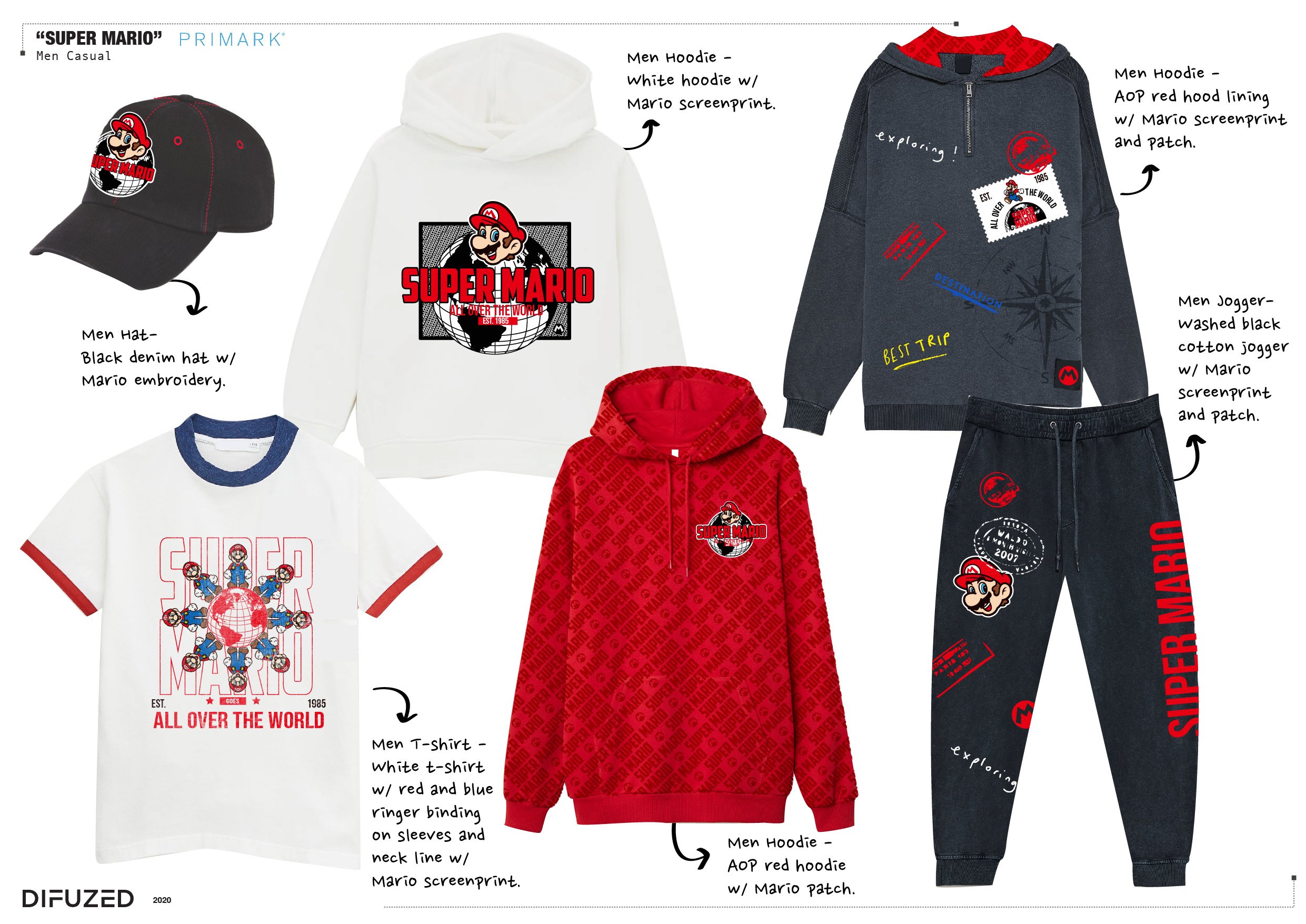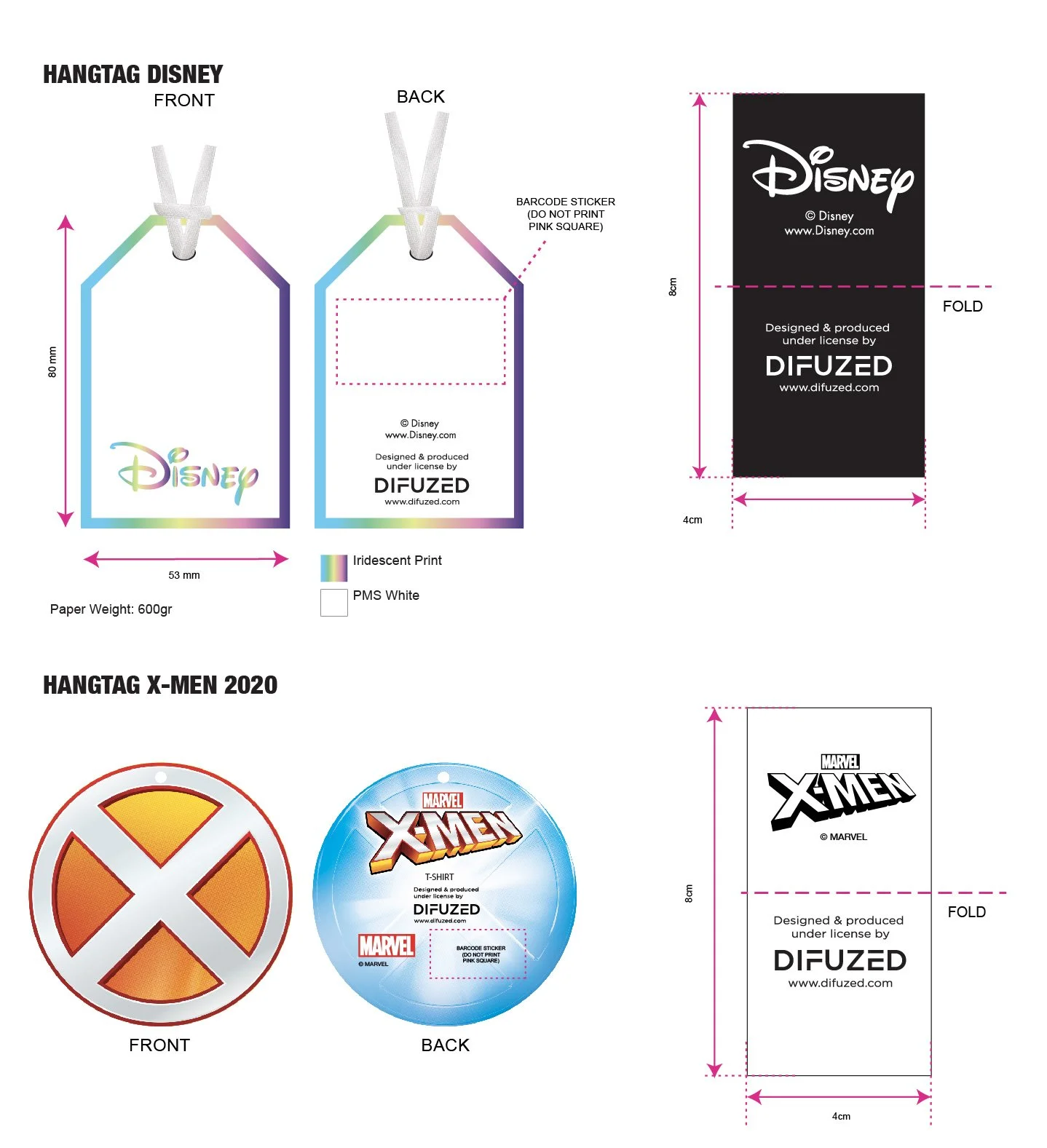Apparel & Accessories Design.
During my time at Difuzed, a licensing company, I worked as an apparel and accessories designer. My main responsibility was to create designs for adult and kids' apparel products, which were sold in popular fashion retailers like Zara, H&M, EMP, Gamestop, and Primark. Each project was tailored to the client's specific requests, including demographics, budget, and timelines.
Role : Apparel & Accessories Designer
Clients : Zara, H&M, EMP, Claire’s, Gamestop, and Primark
Licenses : Pokemon, Marvel, Disney, Starwars, Nintendo, Rick & Morty, Sanrio, etc
Tools : PSD, AI, Microsoft Excel
Project Timeline : varies per project
If time is limited, check out the 1 minute summary below.
SUMMARY
What approach do I use when I get a project?
I am deeply passionate about product and graphic design, and I love experimenting with shapes, colors, and details. When retailers share information with us about their desired products, budget, timeline, and quality standards, we are able to identify specific certified factories in China and India to work with. Collaborating with a team is always enjoyable, as we can brainstorm ideas together and establish a design direction by creating a mood board. We typically divide responsibilities within the team based on categories, such as one person handling accessories and another working on apparel. However, it's not uncommon for one individual to take on both tasks if the project isn't too demanding.
How: build, measure, learn.
Following the initial project request discussion, we obtained all crucial information from the retailer's point of view. Additionally, we verified the availability of fabric in our factory so that we can promptly produce samples and commence production once the design is approved.
To ensure alignment with their collection, we began by creating a mood board.
Once we have sketched out several options, we send them to the buyer for their feedback. They will then choose which option they would like to sample.
As someone who worked as a third party between licensees and retailers, I understand the importance of waiting for approvals from the licensing department.
I prepare tech packs and discuss them with in-house buyers before sending them for sampling to the chosen factory.
After we receive the samples, we have to send them to the licensing department and wait for feedback from the in-house team, licensing department, and retail buyer before proceeding to the final sample and production.
Key learning points
During my time working there, I faced several challenges. One of the biggest was collaborating with individuals from various departments and companies with differing work cultures. Balancing their expectations, priorities, and deadlines while accommodating their unique preferences was difficult, making the process less than seamless. However, a key factor in overcoming these obstacles was maintaining creativity and flexibility in finding solutions for each unique case.
The fast fashion industry is quite dynamic, with a fast pace and high tension. As I handle multiple project requests at once, effective time management and contingency planning are crucial for me to stay on top of everything.
It's crucial to exercise caution during the production phase, as even a minor error can result in production failure, product cancellations, and the loss of trust from retailers.
Do you want to read the full story ? Keep scrolling, 10 minutes read.
Let’s do this!
Background
Difuzed is a company that specializes in licensed fashion and merchandise for both kids and adults. They offer a wide range of products from top brands in the movies, gaming, and lifestyle industries. With over 100 partnerships, including Marvel, Pokemon, Star Wars, Disney, Nintendo, Sanrio, Playstation, Pusheen, and more, Difuzed serves as the designer, producer, and distributor of licensed products to stores worldwide. Some notable retailers that have collaborated with Difuzed include Zara, H&M, Primark, s, Game Stop, EMP, and others. In addition, Difuzed has worked with notable figures such as fashion designer Jimmy Paul for London Fashion Week, and renowned DJ Don Diablo for a Star Wars collaboration. With over 25 years of experience in the industry, Difuzed is a leading name in licensed fashion and merchandise.
Projects & Approach
As an apparel and accessories designer, I often work on various projects for fashion retailers. However, I find that their buyers struggle to navigate the complexities of working with licensors, whose strict rules govern everything from pantone colors to shapes, details, and artwork. In my role as a middle person, I am able to bridge the gap between buyers and licensors, using my familiarity with their rules and my expertise as a designer to guide both parties in the right direction. Given that collections must often be prepared a year or more in advance, it is crucial to stay up-to-date on future trends while also meeting the buyer's requests. Given the competitive nature of the fashion industry, it is essential to deliver results in an agile and efficient manner.
List of Contents.
1. Define
2. Ideate
3. Sample & Production
4. Reflections
1. DEFINE
Once we have had our first meeting and fully grasped the requested project details, my team and I will examine the client's website to gain insight into their brand's aesthetic. We will then create a mood board and ideate potential design directions.
Moodboard & Direction
After some browsing and brainstorming, we created a mood board that contains techniques to use based on the budget requested, the type of apparel and accessories to design, and the color palette to use.
Important notes here include:
Timeline and deadline for production, and when is the floor deadline.
What products to design and how many categories are needed.
I need to consider the budget and decide which factories to utilize.
Direction of the collection and which license and styleguide to use.
“After understanding the brief, I started to find inspiration from updated WGSN trend and other fashion retailers.”
2. IDEATE
Colour Palette, Material, Technique & Pattern
When a buyer doesn't provide a mood board or color palette, I check the WGSN website to determine the appropriate colors for the current season. I always keep the project's style guide in mind and strive to create a distinctive pattern for each project to enhance the design. We also collaborate to determine the most suitable techniques to use. Please refer to the detailed page I created for Primark's Super Marion project.
Sketches
Once I have a comprehensive mood board with well-defined categories and clear design specifications, I am prepared to commence the design process. As an example, I have included some sketches I created for the Primark Men Collection based on a detailed page. Typically, multiple designers are involved in the process, working on both apparel and accessory design. However, it is not uncommon for one person to handle both categories.
Apparel Range
Accessories Range
“After showing the proposal design to retail buyers, ideally, they will decide which will go for samples. However, most of times it will go back and forth to redesign until they are satisfied with the result”
3. SAMPLE & PRODUCTION
Sample
Following the buyers' decision, we are now prepared to proceed with the development of samples. I have already sent the tech packs to the selected factories. It is crucial to establish clear communication and a comprehensive understanding of the project with the factories at this stage. They may commit errors due to their varying techniques or material terms. Therefore, providing them with precise information through the tech packs is of utmost importance.
Upon receiving the samples, I meticulously noted down areas that required improvement or adjustment. Subsequently, I forwarded these samples to the licensing department for their review. This department plays a crucial role in our projects as they have the power to cancel an entire project if it does not align with their licensing criteria, particularly if it involves significant licensees such as Pokemon or Disney. Additionally, I sent samples to retail buyers for their evaluation of the detail and quality, and once I received their final comments, I relayed them back to the factories. This meticulous process takes time, and it often takes 2-3 samples before we achieve the final product for production. Enclosed are some of the product samples that we took in our office.
Production
Once buyers and licensors have given their approval for the selected samples, the project is almost complete. The next step is to create the final production sample, complete with accurate labels and detailed care instructions for the product. While it may seem like a minor detail, the labels are crucial as even a single incorrect letter can impact the entire production process, which is of utmost importance to the licensor. To provide some examples, here are some hangtags and labels used by Disney and Marvel.
Final Products
I find immense satisfaction in witnessing the end result of my work, as I am involved in every step of the process, right from the initial meeting until the production phase. It's an even more fulfilling experience when I spot my designs displayed in stores and observe people purchasing them. Recently, I had the pleasure of seeing my kids' apparel design showcased at the Zara store in Amsterdam.
Photo Shoot
At times, we conduct photo shoots of our final products. Here are some images from the collections I designed while working at Difuzed.
” I collaborated with people from all over the world, including retail buyers from England, Germany, and Spain, and factories in India and China. It was an amazing experience..”
5. REFLECTIONS
What I learned & challenges
Design plays a vital role in the production process, and it involves much more than just sketching and creativity. As an efficient designer, I keep track of every project, manage time effectively, and ensure timely follow-ups with all departments, retailers, and factories to meet the deadlines.
As a great designer, it's important to not only understand client requests for a project, but also to stay current with industry trends and keep up with competitors.
My experiences working with individuals from diverse cultures have taught me the importance of patience and understanding when managing a project. Despite encountering some challenges along the way, I always keep in mind that we all share the common objective of achieving a successful outcome.











